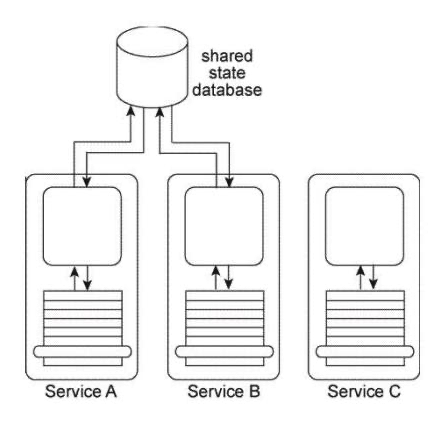Services A, B, and C are non-agnostic task services. Service A and Service B use the same shared state database to defer their state data at runtime. An assessment of these three services reveals that each contains some agnostic logic, but because it is bundled together with the non-agnostic logic, the agnostic logic cannot be made available for reuse. The assessment also determines that because Service A and Service B and the shared state database are each located in physically separate environments, the remote communication required for Service A and Service B to interact with the shared state database is causing an unreasonable decrease in runtime performance.  You are asked to redesign this architecture in order to increase the opportunity for agnostic service logic to be reused and in order to decrease the runtime processing demands so that performance can be improved. What steps can be taken to achieve these goals?
You are asked to redesign this architecture in order to increase the opportunity for agnostic service logic to be reused and in order to decrease the runtime processing demands so that performance can be improved. What steps can be taken to achieve these goals?
Definitions:
Monthly Reconciliation
Monthly Reconciliation is the process of verifying and adjusting the balance of an account to match the corresponding bank or financial statement on a monthly basis.
Bank Reconciliation
The process of matching and comparing figures from the accounting records against those presented on a bank statement.
Deposits In Transit
Funds that have been received and recorded by a business but not yet credited to its bank account, typically due to timing differences in bank processing.
Checkbook Balance
The amount of money available in an account, according to the account holder's records.
Q3: Service A is a utility service that
Q4: It usually is acceptable to use the
Q20: Which statement describes an N_Port login?<br>A) a
Q35: For reinsurance assumed, the concepts analogous to
Q38: A company has a storage subsystem that
Q49: According to SNIA, what is a data
Q68: The ability of one service to _
Q86: Which two performance metrics can be affected
Q97: Liabilities are recognized for known claims when
Q117: You believe that a QoS misconfiguration may